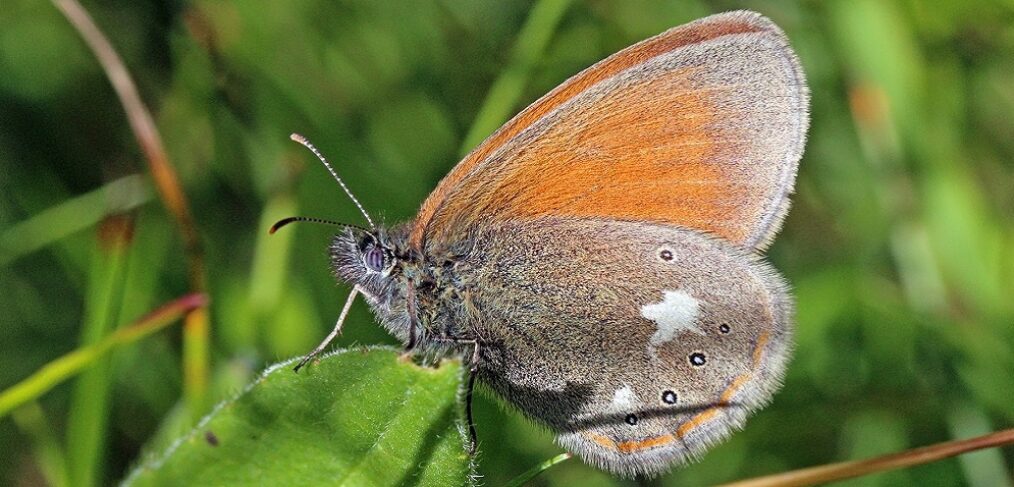
species of the week # 41 – chestnut heath
The chestnut heath is a worldwide occurring but rare butterfly and belongs to the so-called diffrent-habitat inhabitants. This means that it inhabits different biotopes in the various stages of development (egg, caterpillar, pupa, butterfly). Depending on the region, its habitats are, for example, sandy or semi-arid grasslands or lean, extensively used wetland and moor meadows. It can be distinguished from the better known heath species by the shape of the white spots on the underside of the hind wings.
| Distribution status | extinct in Rhineland-Palatinate |
| Remaining deposits | in Bavaria, Baden-Wuerttemberg, Brandenburg |
| Last sighting in Rhineland-Palatinate | 1976 Böhler Bruch |
| Habitat | Lean meadows, depending on the stage of development with varying degrees of wetness |
| Threat | Climate change, decline of extensive agriculture |
The caterpillars feed on various sweet grasses and feed only at night. The adult butterfly, however, is a diurnal butterfly and feeds on nectar plants such as thyme, wild oregano, common burnet, and water broom. In Central Europe, the chestnut heath overwinters as a semi-adult caterpillar. The moths hatch from early June to late August and lay their eggs singly on grass blades, usually near shrubs. The moths are active on warm sunny days, but tend to hide under bushes in hot weather. On cloudy days, and when they settle overnight, they usually perch at the top of dead flower heads, most often on plantain
The chestnut heath inhabits a variety of habitats, including semi-arid grasslands and juniper heaths, as well as extensively used litter meadows and bogs. However, the populations in the latter habitats have been declining strongly for several years. In the Illertal, the chestnut heath is also widespread on lean, still open sites of the former floodplain of the river, which has since been regulated by canalization, barrages and weirs.
Policy Need:
– Safeguard wetland habitats
– Promotion of extensive agriculture
– Promote and safeguard small-scale, diverse landscapes.
To the other species of the week
Image: By Charles J Sharp – Own work, from Sharp Photography, sharpphotography, CC BY-SA 4.0, https://commons.wikimedia.org/w/index.php?curid=61087159
